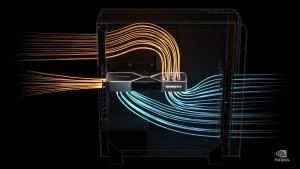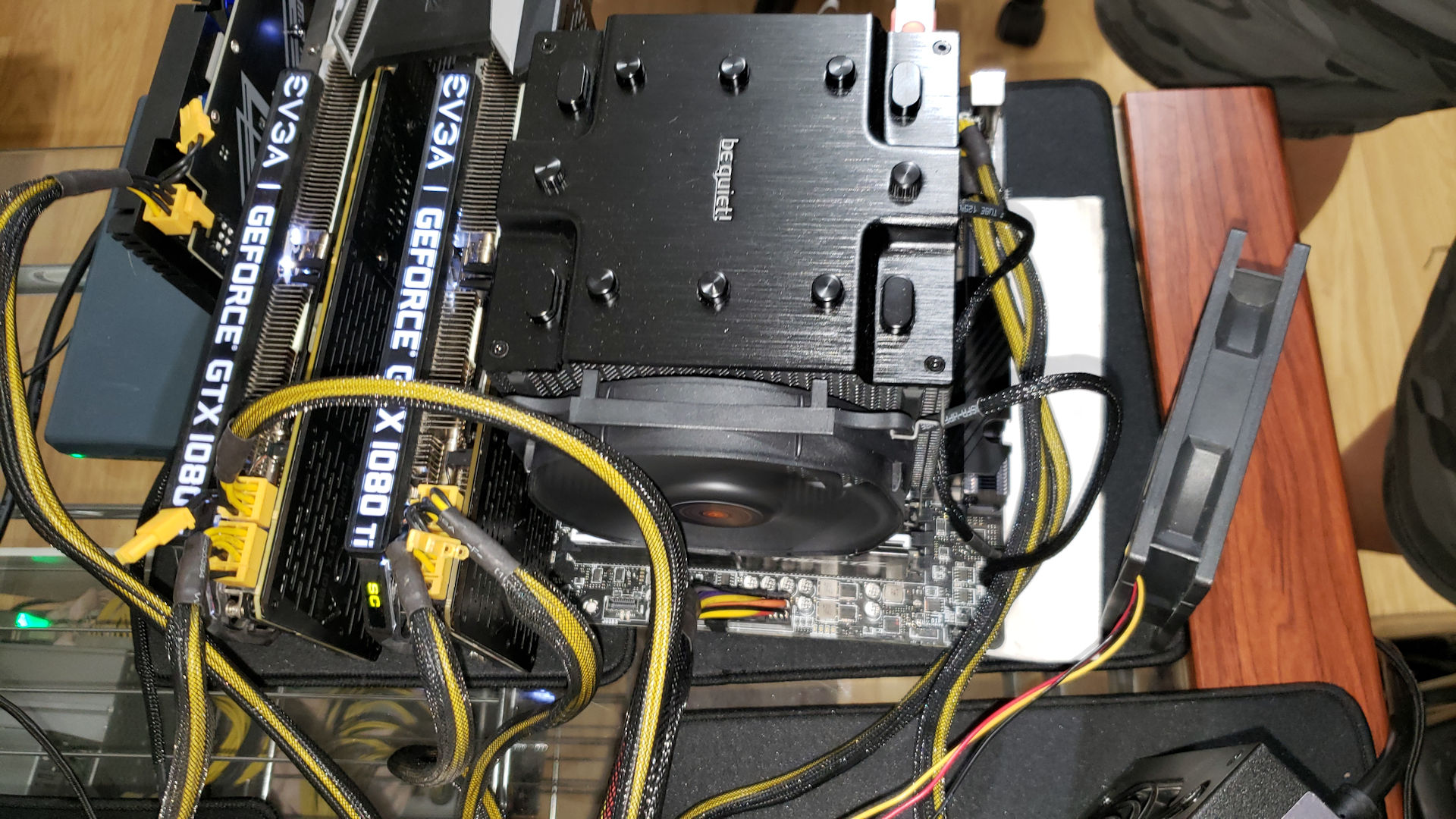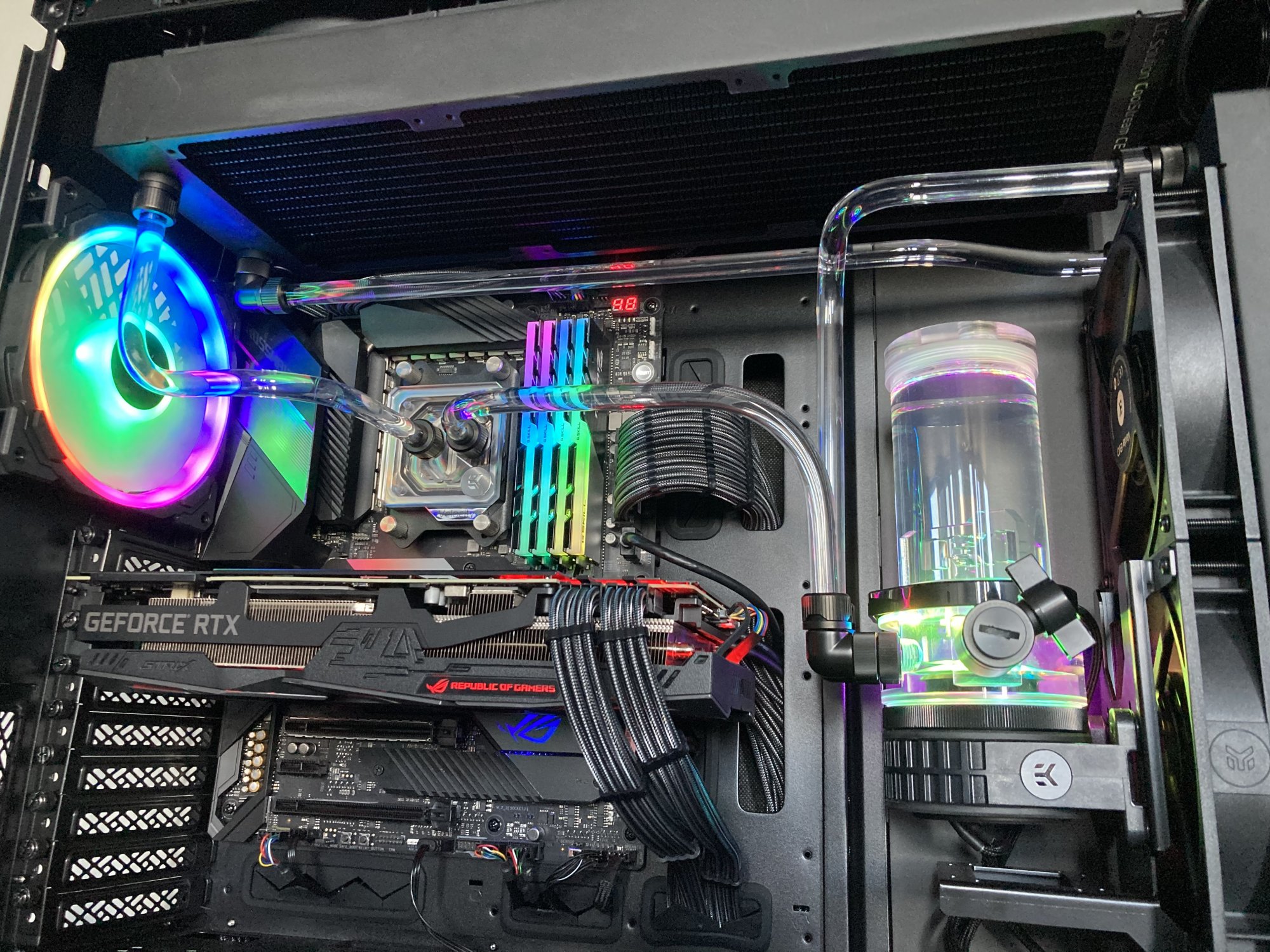After seeing the airflow of the new cooler, there have been some some online concerns about it overheating CPUs.
But this is NOT a cause for concern. Lets think about this from perspective of a standard PC case using just the exhaust behind the MB, and examine some points it raises.
1: Close to 100% of the heat from an open air cooler has to exhaust through that exhaust behind the CPU cooler anyway. So if the new cooler flowed all the hot air into the path of the CPU, it wouldn't really make difference once the system is heat soaked, all that heat is exiting the case essentially through the cooler anyway. So worse case we should be looking at neutral.
2: This new cooler dedicates one fan to blower card operations. So some significant portion of that heat is directly exiting the case. This is pure win. This is the biggest benefit of the design. It's a partial blower. With some portion of the heat leaving through the blower, less will be going through the CPU. This design should lead to cooler CPU than a traditional open fan cooler. For CPU temps. Blower < New NVidia Half Blower < Traditional Open Fan cooler.
3: Blowing air through the GPU Cooler, into the path of the CPU is NOT new. Several cards did this before, several of the AIB 3000 series are doing it. It just never got attention before, and these design don't have the advantage of working like a partial blower.
This is not a problem, it's a solution:

But this is NOT a cause for concern. Lets think about this from perspective of a standard PC case using just the exhaust behind the MB, and examine some points it raises.
1: Close to 100% of the heat from an open air cooler has to exhaust through that exhaust behind the CPU cooler anyway. So if the new cooler flowed all the hot air into the path of the CPU, it wouldn't really make difference once the system is heat soaked, all that heat is exiting the case essentially through the cooler anyway. So worse case we should be looking at neutral.
2: This new cooler dedicates one fan to blower card operations. So some significant portion of that heat is directly exiting the case. This is pure win. This is the biggest benefit of the design. It's a partial blower. With some portion of the heat leaving through the blower, less will be going through the CPU. This design should lead to cooler CPU than a traditional open fan cooler. For CPU temps. Blower < New NVidia Half Blower < Traditional Open Fan cooler.
3: Blowing air through the GPU Cooler, into the path of the CPU is NOT new. Several cards did this before, several of the AIB 3000 series are doing it. It just never got attention before, and these design don't have the advantage of working like a partial blower.
This is not a problem, it's a solution:

![[H]ard|Forum](/styles/hardforum/xenforo/logo_dark.png)

